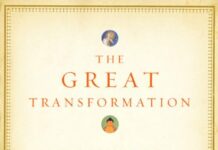
Ebook Info
- Published: 2011
- Number of pages: 474 pages
- Format: EPUB
- File Size: 2.32 MB
- Authors: Karen Armstrong
Description
In the late twentieth century, fundamentalism has emerged as one of the most powerful forces at work in the world, contesting the dominance of modern secular values and threatening peace and harmony around the globe. Yet it remains incomprehensible to a large number of people. In The Battle for God, Karen Armstrong brilliantly and sympathetically shows us how and why fundamentalist groups came into existence and what they yearn to accomplish.We see the West in the sixteenth century beginning to create an entirely new kind of civilization, which brought in its wake change in every aspect of life — often painful and violent, even if liberating. Armstrong argues that one of the things that changed most was religion. People could no longer think about or experience the divine in the same way; they had to develop new forms of faith to fit their new circumstances. Armstrong characterizes fundamentalism as one of these new ways of being religious that have emerged in every major faith tradition. Focusing on Protestant fundamentalism in the United States, Jewish fundamentalism in Israel, and Muslim fundamentalism in Egypt and Iran, she examines the ways in which these movements, while not monolithic, have each sprung from a dread of modernity — often in response to assault (sometimes unwitting, sometimes intentional) by the mainstream society.Armstrong sees fundamentalist groups as complex, innovative, and modern — rather than as throwbacks to the past — but contends that they have failed in religious terms. Maintaining that fundamentalism often exists in symbiotic relationship with an aggressive modernity, each impelling the other on to greater excess, she suggests compassion as a way to defuse what is now an intensifying conflict.BONUS: This edition contains an excerpt from Karen Armstrong’s Twelve Steps to a Compassionate Life.
User’s Reviews
Reviews from Amazon users which were colected at the time this book was published on the website:
⭐You know that scene at the Voice when a singer had only begun to sing few seconds and all 4 judges already pressing their button? Yeah this book is one of those rare ones that becomes instant 5 stars for me, just by reading few early paragraphs at the introduction.The book gives a whole new understanding of pantheism, the idea that God does exist but is much bigger than us humans can ever imagine, that God is the universe and everything in it, and that God as we know it in our respective religions is nothing more than a limited creation of our imagination.That idea of a loving God? That’s a human characteristic. A jealous God? Also a human characteristic. In fact all images of God from fatherly love to His wrath are all images of human characteristics, impulses, desires, and instincts, all of which are enhanced to our idea of a perfection. In other words, our image of God is actually a super-human reflection of us.And the book analyses exactly that, the fascinating evolution of the image of God from a human perspective, from the birth of animism to thousands of polytheism deities to the many millennia of developments that left us with only one true God today. It is surprising to read the story about Adam and Eve, for example, only to find out that it’s Homo Sapiens version of Adam and Eve. That in the beginning there was a big bang and million of years of evolutionary process of the Earth. That it’s not the Garden of Eden but Gobleki Tepe and the birth of farming. Yes, the book is grounded in science and heavy on archaeological findings, which makes it unique as a book about religion.Perhaps most fascinating for me is the thesis that Moses introduced Yahweh (the supreme deity of Midian, where his father in law was a Midianite priest) to the Israelite (a worshiper of the supreme deity of El or Elohim), which in a way answers the few questions I had when reading the Exodus. “El”, according to the author Reza Aslan, is referred in the English Bible as “God”, while “Yahweh” is referred in the English Bible as “Lord.” In fact, the very word Isra-el actually means “El perseveres”. And thus that famous scene of Israelite false worshiping a statue of a golden calf? Golden calf is the primary symbol of El, which indicates that they were trying to get back to worship their original deity.But all of this frictions came to rest when after they settled in the Promised Land the Israelite finally accept Yahweh as one of their deities, as highlighted in Deuteronomy 32:8-9. And both deities were later merged into one as Yahweh-Elohim or Lord God in the English Bible, as first appeared in Joshua 7:19. As Aslan remarked, “[a]nd as happened in Babylon, Assyria, Egypt, and elsewhere, as the nature of the rule of men on earth changed, so, too, did the rule of the gods in heaven to match; in other words, politicomorphism.”Politicomorphism is what prompted the Romans, the Greeks, the Egyptians, and the Mesopotamians to deifying their powerful leaders into a god-man status. It’s what escalated the Hindu god Shiva from obscurity into one of the Trimurti. It was what created many different Christian Gnostic sects before the theological debate being settled in the council of Nicea (itself another politicomorphism action by Roman Emperor Constantine).As Aslan further remark, “[t]he role of human mediator to the gods naturally fell to the gods’ counterparts on earth—primarily kings, pharaohs, and emperors, but also priests and prophets, mystics and messiahs. We saw how this process took shape in ancient Mesopotamia, with the consolidation of power into the hands of an autocratic few who wielded the power of the divine. And, as in Mesopotamia, once the need for a human mediator is accepted, it is a short step to deifying the mediator. After all, it makes a certain amount of sense to expect the person acting as the bridge between humans and the divine to also be divine (or at least semidivine).”This, according to the book, is what happened with the role of Jesus Christ, thanks to the curious central role of a religious scholar named Marcion of Sinope, that set up the foundations of the New Testaments and prompted the new sect of Christianity to broke off from Judaism. And the long and difficult road from the days of Marcion to the council of Nicea was nothing short of extraordinary, where disagreements between many sects of Christianity (from Docetism, Ebionites, to dynamism, and adoptionism) was finally settled with the trinity of Father (Yahweh), Son (Jesus Christ), and the Holy Ghost (the divine spirit of God in the world).Moreover, probably the most difficult thesis for me to digest is the evolution of “Allah”, which hit a little closer to home. While Muslims believe in the monotheistic manner that there are no other god than God (or Allah), in ancient polytheistic Arab Allah was actually seen as a material being who, like Zeus, had sired both sons and daughters. As Aslan elaborates, “[i]ndeed, Allah’s three daughters—Allat, who was associated with the Greek goddess Athena; Manat, who was likely connected with the Mesopotamian goddess Ishtar; and al-Uzza, who was the Arab equivalent of Aphrodite—played a central role in ancient Arab spirituality as Allah’s intermediaries.” But then, as it always does, politicomorphism occurred through the most extraordinary story possible.As you can probably guessed, this book is not for everyone. Nothing is more unsettling for religious devotees to see their God being dismantled into an evolving folklore. But that is not the objective of this book, as Aslan himself respectively suggest that God, in the pantheistic way, is actually a reflection of every single one of these human-made images. Hence, the book is not attempting to disprove the existence of God, but on the contrary it is showing that God lives through all of these deities.In Kindle, the book finishes at 54% mark, with the remaining of the book largely serves as the massive bibliography and notes sections. This tells a lot about the amount of research and evidences that Aslan, the religious scholar, have gathered for this one-in-a-million book. 5 stars from the beginning to the end.
⭐Armstrong’s opening line summarizes the theme of her book. “One of the startling developments of the late 20th century has been the emergence within every major religious tradition of a militant piety known as fundamentalism.” She doesn’t set off on an attack of religion, but rather explains in her view why this has taken place. In short, her answer is, a reaction to modernity. In part, modernity in terms of excess secular rationalism encroaching on spiritual matters where “analysis” doesn’t belong, mostly unintentionally, and even by the pious as influenced by the larger society. The result being a listlessness of civilizations defined by what Nicholas Humphrey (“A History Of The Mind”) characterizes as too much perceptual and too little sensory, with little space for the soul. This is not to say she’ll fill the pious with joy, after all, she says, “A literal reading of Scripture is a modern preoccupation springing from the prevalence of rational over mythical interpretation.” Such interpretations then force a militant stance on Scriptural literalism in the face of criticism revealing Scriptures laced with contradictions (when read literally).Students of civilizations will find thrilling Armstrong’s notion we are in a 2nd Axial Age. All over the globe people are struggling with new conditions, says Armstrong, forced to reassess their religious traditions designed for entirely different types of societies. That is, for agricultural, not urban societies. She argues the first Axial Age (700BCE – 200BCE) was similarly transitional. At least in the manner of accumulating stress over thousands of years of social, cultural and economic change, all beginning with Sumer and its invention of the city (the wheel, writing, etc.). Compare thousands of years of accumulating change to the upheavals now witnessed where whole civilizations rise, globalize, and fall in 72 years (USSR). Technology, with almost no idea of what problems it will breed, and these fiercely dislocating financial machinations are too rapid for humans well suited for hunter gatherer groups of 25 individuals (as Richard Leakey claims), not a planet crammed with 7 billion of us. Armstrong notes that change at a slower pace, or none at all for generations, was once addressed by religion born from and suited for that era without the challenge of scientific criticism and such a fierce pace of technological pressure. While some have tried to withdraw from the secular world (not unlike that classic example of the Essenes), she says, there’s no getting away from it.Armstrong chronicles a list of offenses, response and counter response over the last 400 years for all three Levantine religions. Unlike countermeasures in weaponry, reaction of the social organism takes much longer – generally on the order of at least a half century or more. Such spans seem to be required before populations are able to realize their condition, articulate and maneuver in any meaningful way. The 1926 Skopes trial and America’s fundamentalist response begun in the 1970’s is presented as one example. A fundamentalism Armstrong observes has nothing to do with earlier forms of religious faith, but is rather a new form in which modern science-like interpretations of religion (otherwise known as Creationism) are used to counter modern science-like criticisms of religion. Armstrong seems to have heard of neither Marcel Gauchet (“Disenchantment Of The World”) or Joseph Campbell, who both shed added light on this subject with more on political and mythological aspects respectively.Armstrong not infrequently conflates any form of human hostility since the 16th century with rational modernity. Ethnic cleansing, aggressive force, and abuse of power are hardly new to our world, though one might argue we are provided another avenue over which humans can practice these favored pastimes. Similarly a scent of our Postmodernist fashion occasionally rises from her pages in the usual manner of vilifying the West while lauding other groups for precisely the same acts. “Establishment” of three Islamic Empires (Ottoman, Safavid, Moghul) were to Armstrong “exciting and innovative”, not “violent and imperialistic”. A generally fine book, occasionally tedious with repeated use of Arabic or Hebrew terminology, and finally a reasoned explanation for the secular among us who view fundamentalist forms of pious behavior as so odd. An excellent text for scientist Michael Dawkins and comedian Bill Maher offering them an opportunity to lose some of that smugness.
⭐This book gives a shocking insight into the background of most of our current issues in the Middle East including Israel
⭐It is a tome which must be read by all those who want to understand the evils of institutionalized religions.
⭐I am satisfied.
⭐Good although I donot agree with all written in the book
⭐Muestra Karen Armstrong las raíces profundas de los actuales fundamentalismos que estamos atestiguando en tres religiones monoteistas.En un inglés claro y elegante la autora cautiva al lector desde la primera página.
⭐
Keywords
Free Download The Battle for God: A History of Fundamentalism (Ballantine Reader’s Circle) in EPUB format
The Battle for God: A History of Fundamentalism (Ballantine Reader’s Circle) EPUB Free Download
Download The Battle for God: A History of Fundamentalism (Ballantine Reader’s Circle) 2011 EPUB Free
The Battle for God: A History of Fundamentalism (Ballantine Reader’s Circle) 2011 EPUB Free Download
Download The Battle for God: A History of Fundamentalism (Ballantine Reader’s Circle) EPUB
Free Download Ebook The Battle for God: A History of Fundamentalism (Ballantine Reader’s Circle)




